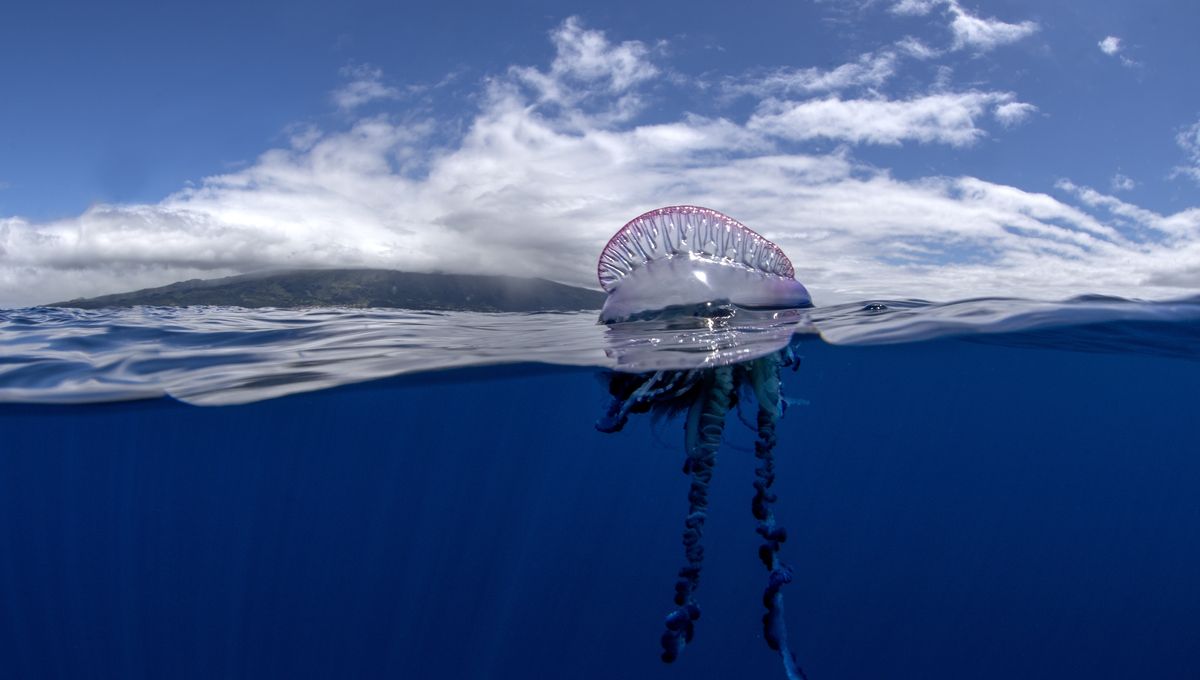
Nothing ruins a nice seaside swim than someone shouting about something swimming in the crystal clear waters, right next to you. While most people might mistakenly call a Portuguese man o’ war a jellyfish, the species is actually a siphonophore, which is closely related. Now, scientists have worked out that the fearsome man o’ war is actually four species, not just one.
Given how these siphonophores can travel the ocean surface with their gas-filled bodies and little protruding sails, it was thought that the global population was all one species, especially given that they exist in the Atlantic, Indian, Pacific, and Southern Oceans. However, new research has taken a closer look at genetic data, distribution, and appearance of these weird-looking creatures, and some clear differences have been found.
“We were shocked, because we assumed they were all the same species,” Griffith University’s Professor Kylie Pitt said in a statement. “But the genetic data clearly show they’re not only different, they’re not even interbreeding despite overlapping ranges.”
The team sampled 151 members of the Physalia genus and found clear genetic differences that amounted to four species. The researchers then took to citizen science platform iNaturalist and scoured 4,000 images looking for morphological differences in appearance between each of the four species. The team were looking for key differences in the color of the sail apex, and the color of the bodies, as well as comparing different lengths of body parts with respect to each other.
This helped produce a clear understanding of the morphologies, which, when coupled with the genetics research, produced four clear and distinct species: Physalia physalis (the previous species name for all), Physalia utriculus, Physalia megalista, and Physalia minuta.
“There’s this idea the open oceans all connected, and it’s just one species of bluebottle and they’re all globally connected because they drift with the wind and the current,” Professor Pitt said. “But that’s absolutely not the case.”
The team think that the four species could even be further spilt into taxonomic subpopulations. The four each have clear, though sometimes overlapping, home ranges: “Physalia physalis from the Atlantic; P. utriculus, present throughout the Pacific, Indian, and into the SW Atlantic; P. megalista, present in the southern portion of the Pacific, Indian, and Atlantic; and, P. minuta, present near New Zealand and Australia,” explain the authors in the paper.
Three of the species had been proposed to exist before, but scientists at the time lacked the equipment and technology to be able to simultaneously study different populations.
The paper is published in Current Biology.
Source Link: Portuguese Man O' War Found To Be Four Species Not One After 250 Years